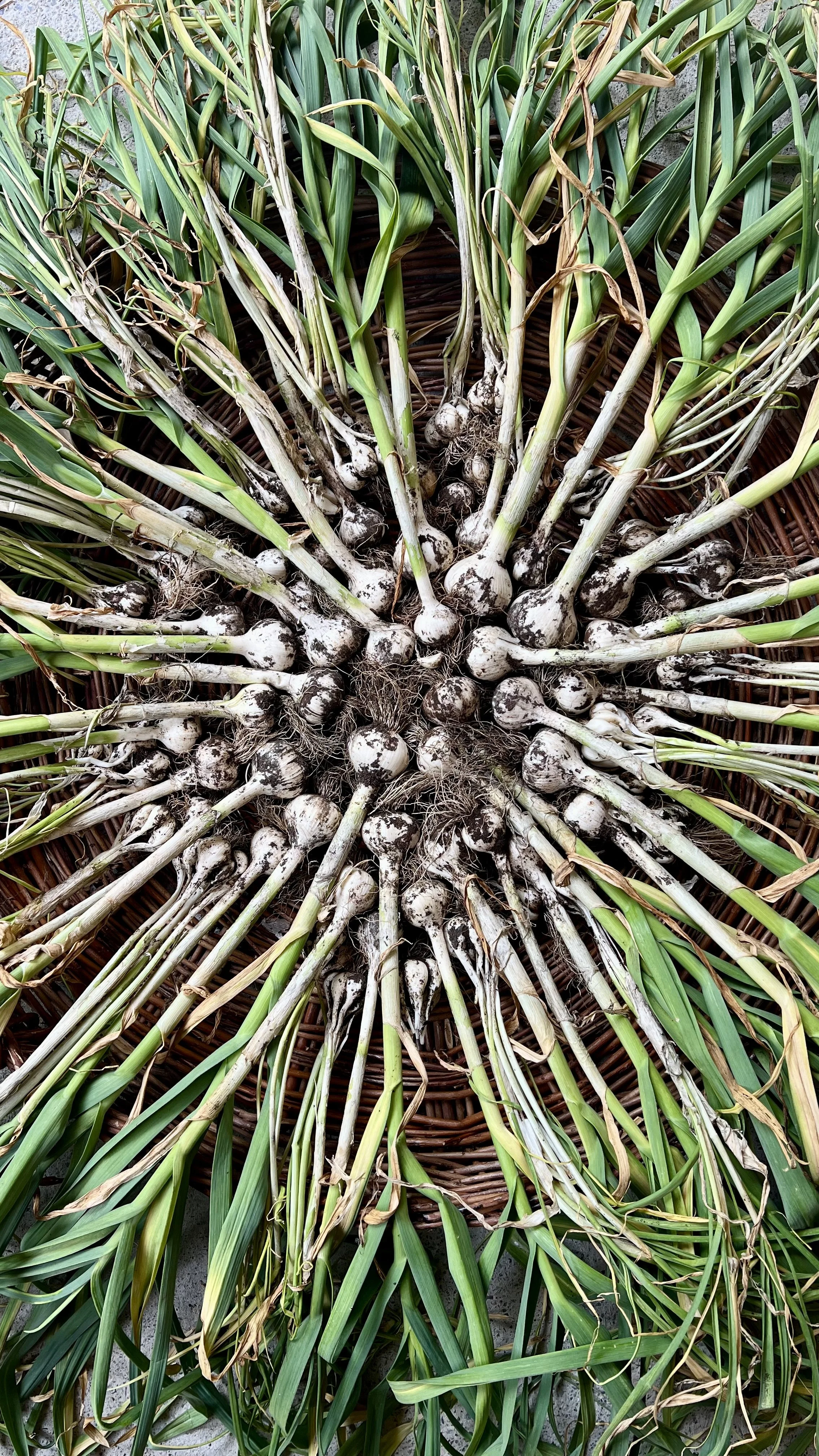Garlic
allium sativum
Botanical Name: Allium sativum
Family: Amaryllidaceae
What We're Growing:
We grow hardneck garlic varieties known for their rich flavor and strong medicinal qualities. From clove to scape, every part has a purpose.
How We Use It:
Garlic is a cornerstone in our kitchen — roasted, minced, fermented, or infused into oils. It brings bold flavor to soups, sauces, meats, and dressings.
Why It’s Good for You:
Garlic is one of the oldest known medicinal plants — long valued for its immune-boosting and heart-supportive properties. When garlic is crushed or chopped, it releases allicin, a powerful sulfur compound shown to have natural antimicrobial and antiviral effects. It’s also rich in compounds that help regulate blood pressure, improve circulation, and reduce systemic inflammation.
Regular consumption of garlic has been linked to improved cholesterol levels, better metabolic health, and reduced risk of certain chronic diseases. It also supports detoxification pathways in the liver, making it a true “everyday medicine” in the kitchen.
In the Garden:
Garlic is planted in fall and harvested in early summer. It thrives in rich, well-drained soil and benefits from a long cold period — making it ideal for seasonal rhythms.
Fun Fact:
In ancient Greece, athletes and soldiers ate garlic before competitions and battles, believing it boosted strength and courage.

